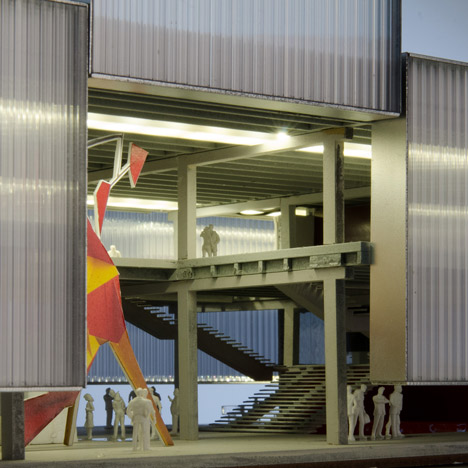In the second announcement from Rem Koolhaas' office today, OMA have unveiled their designs to convert a 5400 square metre 1960s pavilion in Stalinist-era Gorky Park in Moscow into a new venue for the Garage Centre for Contemporary Culture. Update: watch Rem Koolhaas give a quick introduction to the gallery in Dezeen's movie here.
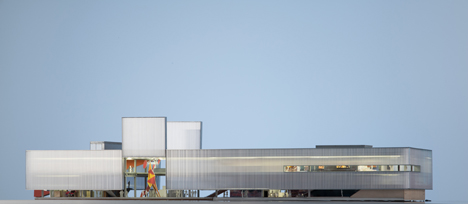
Above: Garage Gorky Park - overview
The renovation of the famous prefabricated-concrete Vremena Goda restaurant, which has been derelict for over 20 years, will preserve some of the original Soviet elements and will create exhibition galleries on two levels, a creative centre for children, a shop, café, auditorium and offices.
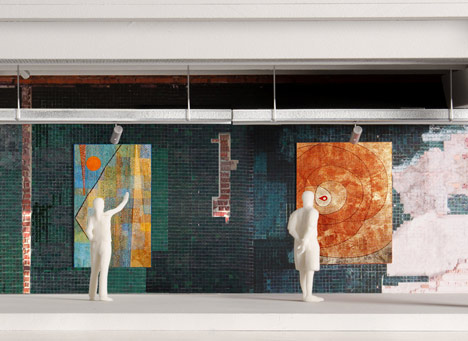
Above: hinged panels raised
Translucent polycarbonate will clad the exterior, while inside the galleries hinged panels will fold down from the ceilings to create white walls when necessary.
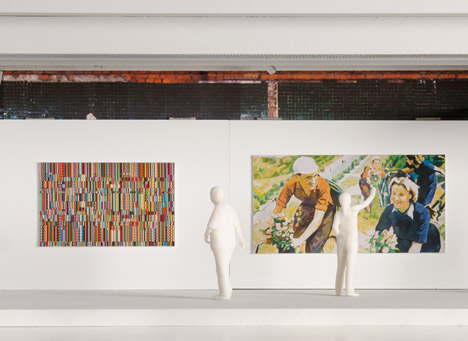
Above: hinged panels lowered creating an instant white cube
One of the floors will also be removable, allowing the lobby to be converted into a double height space that can accomodate larger artworks and sculptures.
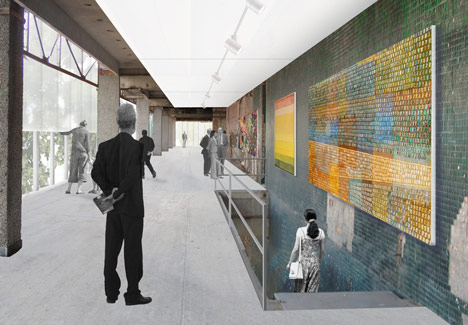
Above: education platform
Completion is scheduled for next year.
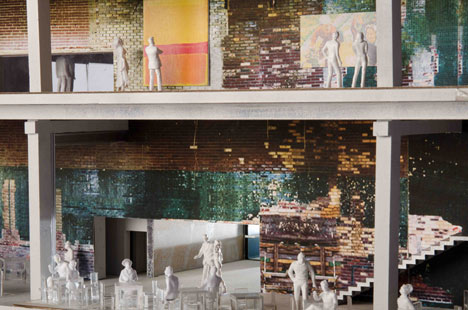
Above: south gallery view
OMA have also announced that they won the first round of a competition to oversee an expansion of the Russian capital. See all of our stories about OMA here.
Here is some more information from OMA:
Rem Koolhaas' OMA to design new home for Garage in Moscow
Today, Garage Center for Contemporary Culture unveiled concepts for a new building in Gorky Park, designed by Rem Koolhaas’ OMA.
Garage Gorky Park - due to be completed in 2013 - will be a renovation of the famous 1960s Vremena Goda (Seasons of the Year) restaurant, a prefabricated concrete structure that has been derelict for more than two decades.
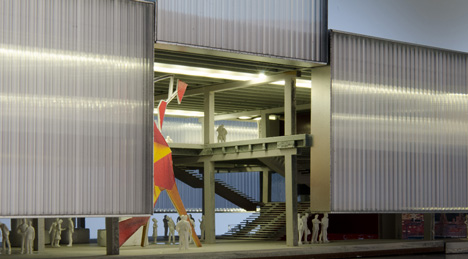
Above and top: entrance to the pavilion
OMA’s design for the 5,400 square meter building includes exhibition galleries on two levels, creative center for children, shop, café, auditorium and offices.
The design preserves original soviet-era elements – including a large mosaic, and decorative tiles and brick – while incorporating a range of innovative architectural and curatorial devices. OMA is collaborating on the project with the young Russian practice Form Bureau.
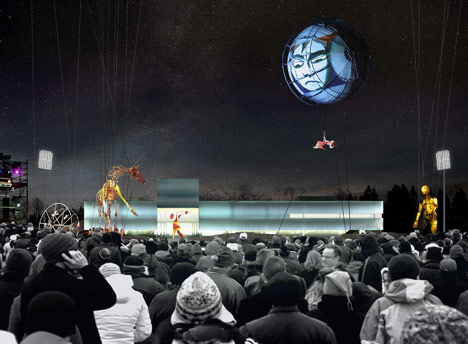
Above: outdoor events
Dasha Zhukova said, “Our move to Gorky Park marks an exciting new phase in Garage’s development. I am delighted that we have one of the world’s leading architects, Rem Koolhaas’ OMA, working on the project, and I am sure their plans will attract a new generation of visitors to Garage.”
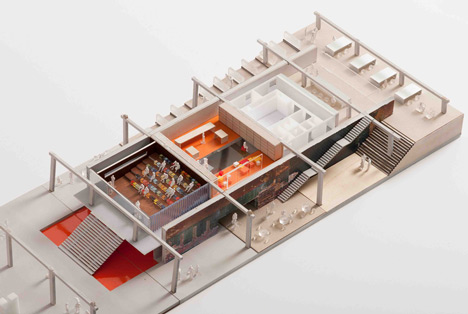
Above: 'conventional' gallery
Rem Koolhaas commented, “We are very happy to work on turning the almost-ruin of Vermena Goda into the new house for Garage. We were able, with our client and her team, to explore the qualities of generosity, dimension, openness, and transparency of the Soviet wreckage and find new uses and interpretations for them.”
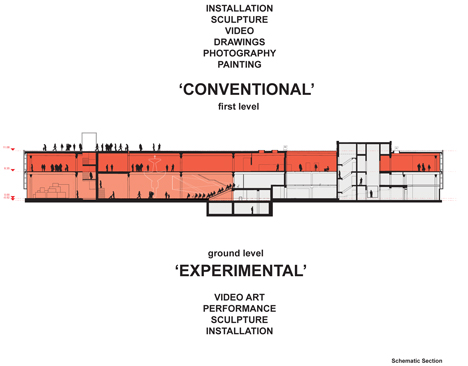
Above: exhibition concept
Garage, founded by Dasha Zhukova in 2008, is a major non-profit arts project based in Moscow, dedicated to exploring and developing contemporary culture. At the beginning of this year, Garage moved from its original home in the Bakhmetevsky Bus Garage to Gorky Park in Moscow.
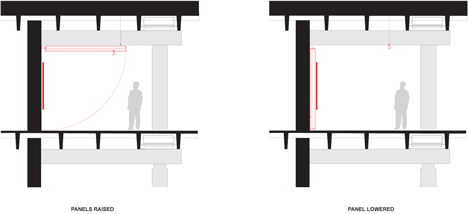
Above: hinged panels
Garage aims to bring important international modern and contemporary art to Moscow, to raise the profile of Russian contemporary culture internationally and encourage a new generation of Russian artists. It also organizes and supports a wide range of cultural projects internationally.
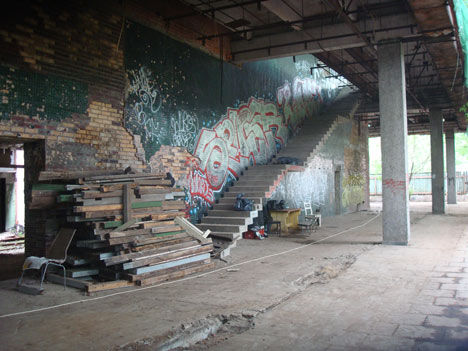
Above: before - Vremena Goda Pavilion March 2012
The Stalin-era Gorky Park was planned in the 1920s by renowned soviet Constructivist architect Konstantin Melnikov, who also designed Garage’s previous home, the Bakhmetevsky Bus Garage. Opened in 1928, Gorky Park extends 300 acres along the Moskva River in the heart of Moscow.
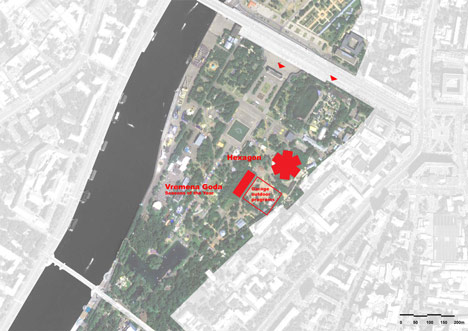
Above: Garage Gorky Park location
The park is undergoing a major renovation and regeneration project, of which Garage Gorky Park is a major part.
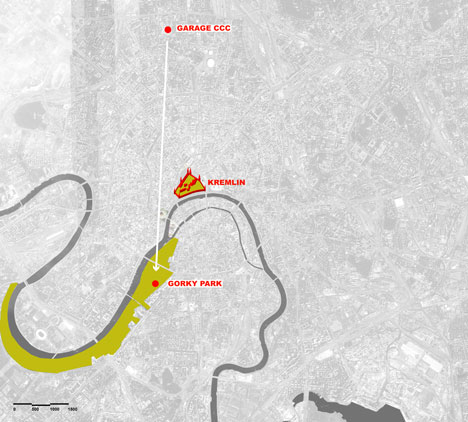
Above: Garage moves
Co-founded by Rem Koolhaas in 1975, OMA is a leading international office practicing architecture, urbanism and cultural analysis.
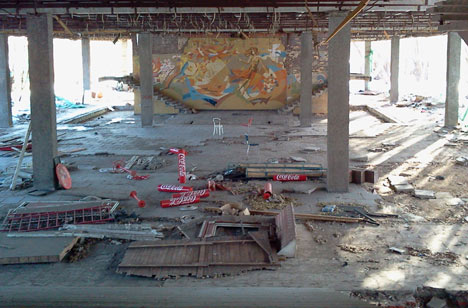
Above: before - Vremena Goda Pavilion March 2012
Dedicated for over thirty years to the design and realization of buildings and masterplans, OMA is led by seven partners – Rem Koolhaas, Ellen van Loon, Reinier de Graaf, Shohei Shigematsu, Iyad Alsaka, David Gianotten and Managing Partner Victor van der Chijs - and sustains an international practice with offices in Rotterdam, New York, Beijing, Hong Kong and soon Doha.
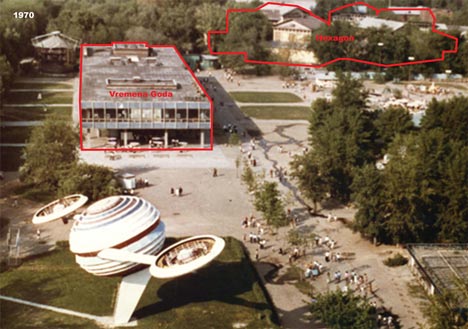
Above: before - Vremena Goda Pavilion and Hexagon in 1970
The work of Rem Koolhaas and OMA has won several international awards, including the Pritzker Architecture Prize in 2000 and the Golden Lion for Lifetime Achievement at the 2010 Venice Biennale.
Watch this movie on Dezeen Screen »
The post Garage Centre for Contemporary Culture
by OMA appeared first on Dezeen.
